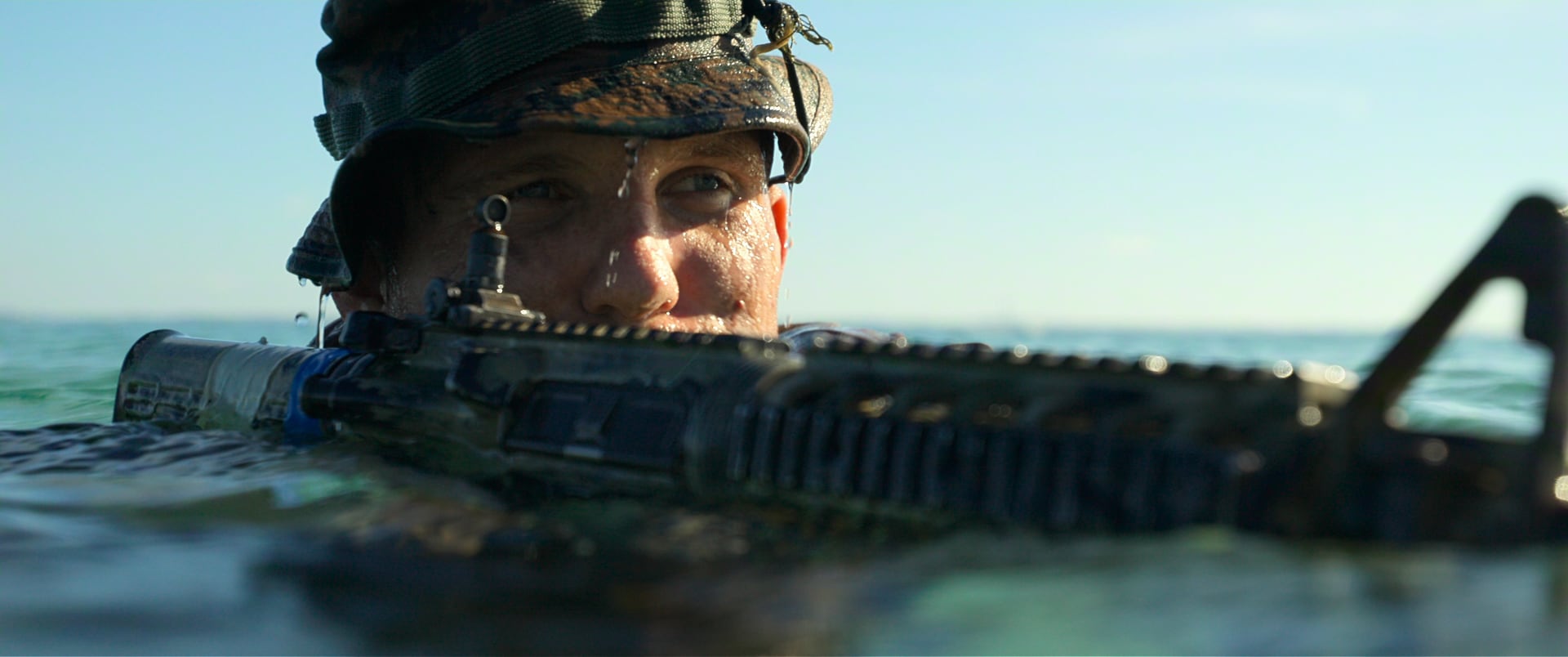The Marine Corps' next-generation simulated marksmanship trainers are now on their way to the fleet, and they'll thrust Marines into realistic training scenarios that mimic the complexities of the battlefield.
Those capabilities will both provide Marines with more realistic training while saving the Marine Corps a significant amount of money at a time when Defense Department budgets are plummeting, said Anthony Carbonari , the product manager for individual training systems with PM TRASYS in Orlando.
, the product manager for individual training systems with PM TRASYS in Orlando.
"If you consider the amount of money that it takes to conduct live fire — range time, labor, ammunition — creating an ISMT with the highest level of fidelity is going to encourage savings," he said.
Advances in technology mean they can now offer a system that can be used not only just for fundamental marksmanship training, but for complex scenarios that closely mimicking the stresses of combat and real world ballistics. That should encourage more leaders to utilize ISMTs between time on the range, said Chief Warrant Officer 4 Matthew Harris, the Marine gunner at PM-TRASYS.
"This was never intended to replace live fire, but to enhance training so we better use live fire," Harris said.
The hyper-realistic system will also allow Marines to see rounds that are normally visible as they travel down range — like those from AT4 Anti-tank Weapons — and mimic the actual ballistics of everything from pistol bullets to buckshot. And the simulated rounds will act as Marines can expect them to in real combat.
"For example, an M16A4 round should penetrate grass, bushes, canvas, and other soft targets, but not damage a tank," the system requirements state.
Perhaps most importantly, the system will help instructors quickly zero in on any problems their students are having with basic marksmanship by recording Marines' sight alignment, trigger control and other movements that contribute to accuracy. That removes any guess work on the part of instructors and allows them to better teach Marines during and after firing, said Bill Fondriest  who oversees ISMT programs for PM TRAYSYS in Orlando, Florida.
who oversees ISMT programs for PM TRAYSYS in Orlando, Florida.
"That is very expensive when doing that with live fire," he said. "The ISMT tells exactly what you are doing wrong so when they get out there, every round the taxpayer bought, they are using well."
Trainers can also develop squad tactics by networking several ISMTs to form an Infantry Squad Trainer. That will allow up to 24 Marines to participate in scenarios simultaneously.
That can hone leadership skills, Harris said.
When paired with the ability for units to program their own scenarios and structures into simulations, Marine with specialized jobs will now be able to prepare for specific emergencies. Marine security guards deploying to an embassy, for example, could run through emergency scenarios in those facilities before they ever set foot there. And because the new system is highly mobile and scalable, it could be set up in an embassy or on a ship as part of a Marine expeditionary unit so personnel can continue training on deployment.
Marines can execute missions in new ISMTs to include hasty attacks, meeting engagements, raids and engagement of enemy targets that include aircraft and armor. Trainers can simulate those on terrain to include mountain and desert to woodland and urban including features like glaciers, volcanoes and coastal areas.
To complete the immersive experience, the service requires that the cacophony of sounds Marines are exposed to "be of such fidelity, quality realism and volume that students shall experience the cues, stresses, and distractions of a 'real life' combat situation," the requirements state.
With most of those weapons, trainers can be programmed to require reloading, clearing malfunctions, or even switching barrels.
As part of the contract award the Marine Corps will order additional weapons compatible with the ISMT to include 150 M4s; 568 M16s; 100 M9s; 100 M27s; 100 M32s; and 100 M72s Light Anti-Tank Weapons.
The Reserve will be the first to receive theirs this year simply because as they sprung for the first purchase, Harris said. They will then deliver about 18 systems per month to the active-duty force with priority to deploying units and those that currently use ISMT trainers regularly.
systems per month to the active-duty force with priority to deploying units and those that currently use ISMT trainers regularly.





